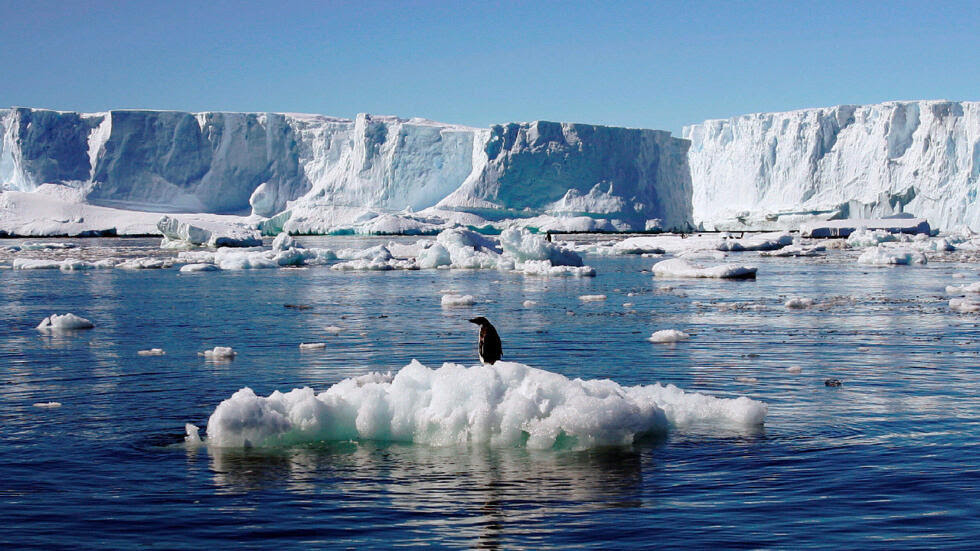
Skeptics do not believe in climate change but the strongest proof is the retreat and disappearance of mountain glaciers worldwide. According to preliminary data for 2022/23, 2023 was the 36th consecutive year that the reference glaciers tracked by the Global Glacier Monitoring Service lost rather than gained ice.
The present history of glaciers that exist today is for the most part remains of the last ice age. Strong ice sheets advanced and retreated on most continents several times before retreating to the polar regions about 10,000 years ago.
Continental ice caps still cover Greenland and Antarctica, while smaller ice caps and glaciers have retreated to the high latitudes and mountains of the world.
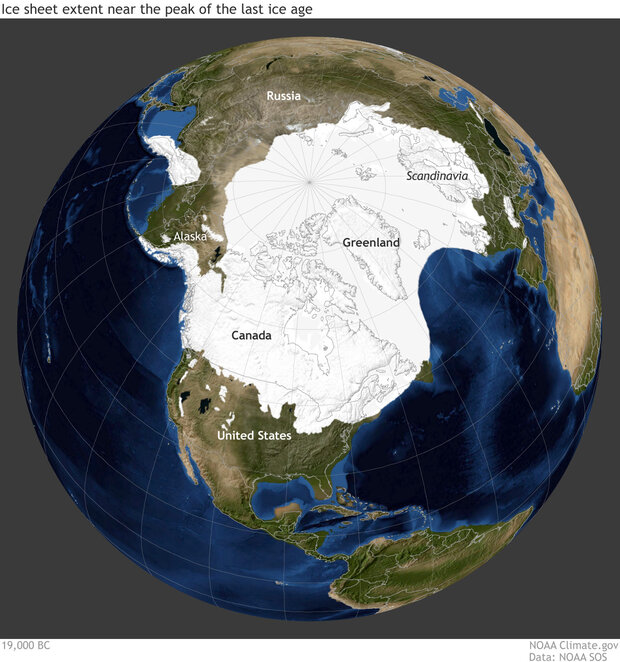
Roughly 20,000 years ago, during the Last Glacial Maximum of the Pleistocene Ice Age, ice spread over much of North America and Eurasia. (High-resolution without annotations available.) Image by Climate.gov based on data from the University of Zurich Applied Sciences, provided by Science on a Sphere.
Initially, researchers began studying glaciers only for the clues they gave about the Earth’s climate during the last ice ages and the role they played in landscape formation.
Now they are also trying to understand how quickly climate change caused by man will make them disappear completely.
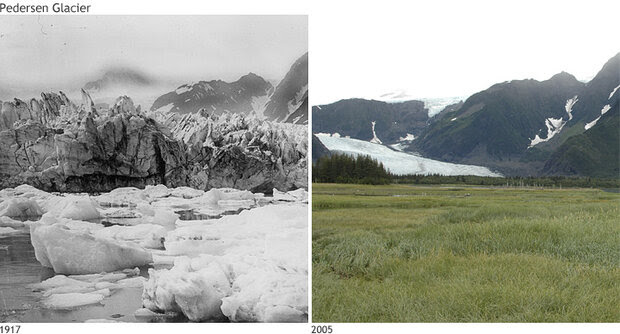
Pedersen Glacier, at Aialik Bay in Alaska’s Kenai Mountains, in 1917 (left) and 2005 (right). In the early 20th century, the glacier met the water and calved icebergs into a marginal lake near the bay. By 2005, the glacier had retreated, leaving behind sediment allowed the lake to be transformed into a small grassland. Photos courtesy of Louis H. Pedersen (1917) and Bruce F. Molina (2005), obtained from the Glacier Photograph Collection, Boulder, Colorado USA: National Snow and Ice Data Center/World Data Center for Glaciology. Large images: 1917 | 2005
The calculation establishing the glacial change
The measure is that glaciers gain mass through snowfall and lose mass through melting and sublimation (when water evaporates directly from solid ice). Glaciers that end in a lake where the ocean also loses mass through iceberg calving.
By contrast, glaciers that end in the ocean are called tidal glaciers, and they have more complex cycles of advance and retreat than glaciers that end on land, at least on annual and decades time scales. Even in a stable climate, these glaciers may experience periods of rapid retreat that are more influenced by the topography of the seabed and ocean circulation at their extremities than recent climatic conditions.
The best way to observe a glacier develops or shrinks, researchers check the state of snow and ice in several places on the glacier at the end of the melting season. Scientists check snow levels against the piles they inserted into the glacier, dig snow pits on the surface to examine the sequence of seasonal layers and insert long poles into the glacier to probe snow and ice characteristics.
Overall, the difference in snow thickness from the previous measurement indicates the mass balance of the glacier, that is, whether the glacier has grown or shrunk. Changes in the area and terminus of large glaciers can also be tracked by satellite imagery.
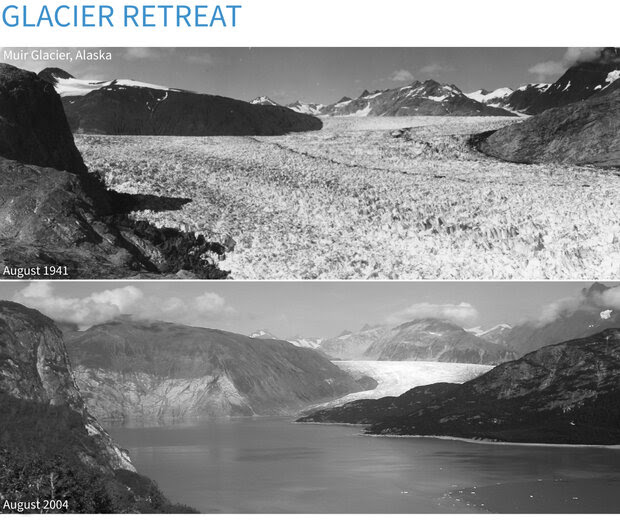
Retreat of southeastern Alaska’s Muir Glacier between August 1941 and August 2004. Historically, Muir Glacier was an iceberg-calving, tidewater glacier. Its terminus was grounded in the waters of Muir Inlet, a narrow opening to Glacier Bay. In the six decades between the two photos, it has retreated so far that it’s terminus is now inland. Photos from the National Snow and Ice Data Center’s collection of repeat photography of glaciers.
The global curve over time
Researchers have studied more than 100,000 glaciers in the Global Glacier Inventory, but only a small fraction of them have been consistently monitored for long enough to measure climate-related changes in their size or mass.
The researchers present this global collection of about 60 glaciers as glaciers of “climatic reference”. The annual update for a given year will include about 40 reference glaciers. (Not all glaciers are surveyed each year).
The global reference, the WGMS, mentions that the last hydrological years (2021/22 and 2022/23) each resulted in ice losses well above the average of the last decade (2010-2019). Observed reference glaciers experienced ice loss of 1.1 m water equivalent and 1.2 m water equivalent, respectively. This represents about 4 feet of ice off each glacier in the system each year. With this,” they report on their website, “seven of the ten most negative mass balance years were recorded after 2010.”
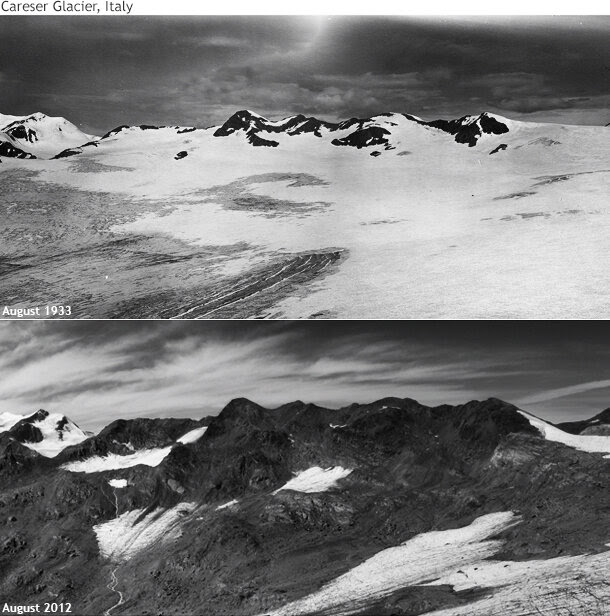
Photos documenting the disintegration of Italy’s Careser Glacier between 1933 (top) and 2012 (bottom). After decades of negative mass balance, glaciers worldwide are shrinking, fragmenting, or disappearing. Photos courtesy of Luca Carturan, University of Padova
By adding up the losses or gains from each year to 2023, glaciers in the reference system lost just over 26 feet of water equivalent compared to 1970—about the same as cutting an average of 28.6 metres (94 feet) at the top of every glacier.
In State of the Climate in 2019, glacier expert Mauri Pelto reported that the rate of glacier loss in the WGMS reference network has accelerated from -171 millimetres (6.7 inches) per year in the 1980s to -460 millimetres (11 inches) per year in the 1990s, at -500 millimetres (1.6 feet) per year in the 2000s, at -889 millimetres (2.9 feet) per year for the 2010s. In many parts of the world—including the western United States, South America, China, and India— glaciers are frozen reservoirs that provide a reliable summer water supply to hundreds of millions of people and the natural ecosystems on which they depend. Their accelerated retirement poses major challenges for people and nature.
参考资料
Pelto, M., WGMS Network. (2020). Alpine glaciers [in State of the Climate in 2019]. Bulletin of the American Meteorological Society, 101(8), S37–S38. doi.org/10.1175/2020BAMSStateoftheClimate.1.
Pfeffer, W. T. (2003). Tidewater glaciers move at their own pace. Nature, 426(6967), 602–602. https://doi.org/10.1038/426602b
World Glacier Monitoring Service (2020, updated, and earlier reports). Global Glacier Change Bulletin No. 3 (2016-2017). Zemp, M., Gärtner-Roer, I., Nussbaumer, S. U., Bannwart, J., Rastner, P., Paul, F., and Hoelzle, M. (eds.), ISC(WDS)/IUGG(IACS)/UNEP/UNESCO/WMO, World Glacier Monitoring Service, Zurich, Switzerland, 274 pp., publication based on database version: doi:10.5904/wgms-fog-2019-12.
World Glacier Monitoring Service. (n.d.) Global Glacier State. Accessed May 10, 2024.

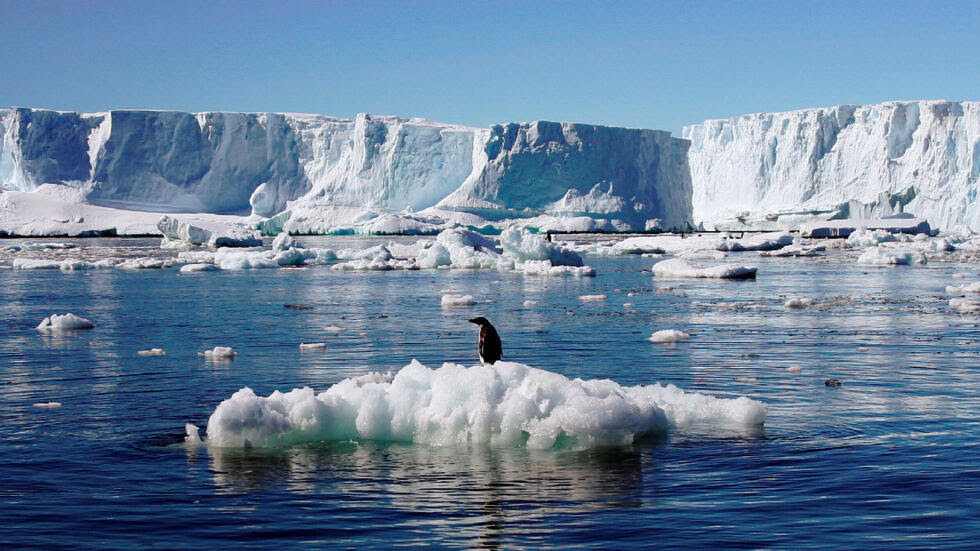

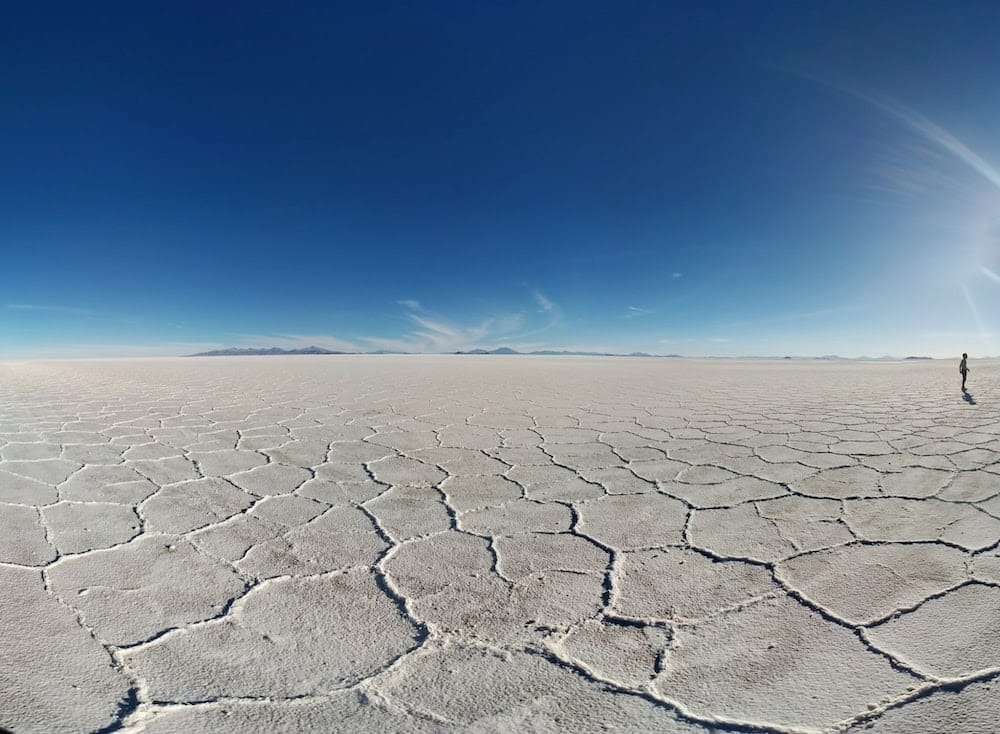

Simply wish to say your article is as amazing The clearness in your post is just nice and i could assume youre an expert on this subject Well with your permission let me to grab your feed to keep updated with forthcoming post Thanks a million and please carry on the gratifying work
Thank you
Magnificent beat I would like to apprentice while you amend your site how can i subscribe for a blog web site The account helped me a acceptable deal I had been a little bit acquainted of this your broadcast offered bright clear idea
Thank you